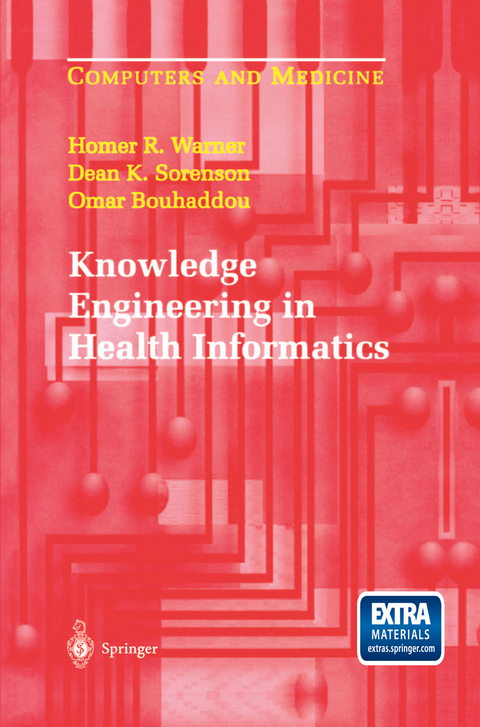
Knowledge Engineering in Health Informatics
Springer-Verlag New York Inc.
978-1-4612-7299-1 (ISBN)
1 Background and Legacy.- Overview.- Knowledge Representation and Computation Methodologies.- 2 The Expert System Model.- to Modeling.- Choosing a System to Model.- Choosing a Model.- 3 Iliad: The Model Used for This Text.- The Frame Concept.- The Probabilistic Model: Dealing with Uncertainty.- Probabilistic Information.- Heuristics That Improve the Model.- 4 The Data Dictionary: Limiting the Domain of the Model.- Organization of the Dictionary.- Context Versus Concept.- Hierarchical Relationships.- Granularity of the Dictionary.- Modifying the Dictionary.- Knowledge Contained in the Dictionary.- Inferencing from the Hierarchy.- Word Relations.- Data Relations.- 5 The Knowledge Engineering Process.- How to Structure/Model the Knowledge.- The Overall Process.- Knowledge Sources: Advantages and Limitations of Each.- Which Findings to Include in a Frame.- Probabilistic and Deterministic Logic.- Reasons to Cluster.- Types of Clusters.- Frames That Return a Value.- Estimating Probabilities.- Testing Frames in Isolation.- Sources of Error.- Tools to Facilitate the Knowledge Engineering Process.- Combining Frames into a Working System.- 6 Evaluation of the Model.- Testing and Refining the Compiled Knowledge.- Appropriateness of Decisions Based on Data Entered by Experts.- Testing with Data Newly Entered from Patient Charts.- Testing with Cases Stored Earlier.- Modifying Source Frames As Required: The Iterative Process.- 7 Applications of the Model.- Modes of Use.- The User Interface.- Minimal Diagnosis.- Bayes Calculator.- Interfaces to Other Knowledge.- Compromises.- 8 Lessons Learned.- Teaching Medical Clerks, Physician Assistants, and Other Trainees.- As a Tool for Preauthorization.- As a Screening Tool for Quality Improvement.- Commercial Users of Iliad.- 9 Knowledge Engineering Tools.- Knowledge Acquisition.- Structuring and Coding the Knowledge.- Testing the Knowledge Base.- Summary.- 10 Example Knowledge Bases.- The Knowledge Engineering Class.- Medical and Pediatric HouseCall.- Symptom Analysis.- Deriving HouseCall from Iliad.- Knowledge Engineering for HouseCall.- 11 Future Challenges.- Links to Patient Data: Client Server/Version of Iliad.- Future Directions.- References.- Appendices.- 1 Example Hierarchies of Top-Level Diseases (Final Diagnoses) in Various Medical Specialties.- 2 Approximate Estimated Prevalences for Selected Top-Level Diseases in a Family Practice Setting, Categorized by Specialty.- 3 Using the Iliad KE Tool.- 4 Some Example “Domain-Specific” Symptom Lists.- 5 Example Data Relations.- 6 Example Word Relations.
| Reihe/Serie | Computers and Medicine |
|---|---|
| Zusatzinfo | XVI, 265 p. |
| Verlagsort | New York, NY |
| Sprache | englisch |
| Maße | 155 x 235 mm |
| Themenwelt | Mathematik / Informatik ► Informatik |
| Medizin / Pharmazie ► Medizinische Fachgebiete | |
| Technik ► Medizintechnik | |
| ISBN-10 | 1-4612-7299-8 / 1461272998 |
| ISBN-13 | 978-1-4612-7299-1 / 9781461272991 |
| Zustand | Neuware |
| Haben Sie eine Frage zum Produkt? |
aus dem Bereich


